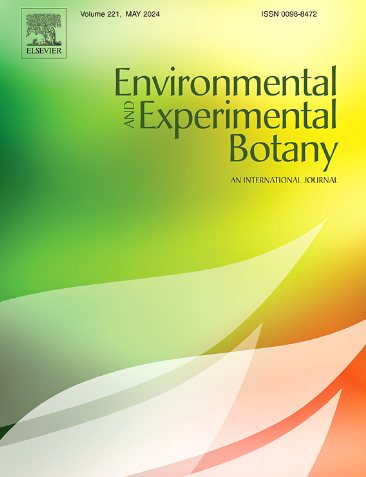28种植物幼苗异养生长参数的变化及其与种子性状的关系
IF 4.7
2区 生物学
Q2 ENVIRONMENTAL SCIENCES
引用次数: 0
摘要
在温带气候下,受异养生长影响的幼苗出苗时间是一年生植物竞争成功的关键决定因素。虽然异养生长阶段对田间条件下的幼苗建立至关重要,但与其他生长阶段相比,对其的探索要少得多。为了解决这一问题,我们通过:i)分析初生种子根和芽的异养生长,重点研究它们的种间和种内多样性和生长同步性;ii)研究种子性状和异养生长参数之间的关系,探讨这些性状如何影响生长动态。我们综合了28种植物的数据,包括13种作物、11种杂草和4种模式植物,结合了新数据集和已发表的数据。研究人员评估了所有28个物种的异养根生长的种间变化,并详细研究了7个物种的异养根生长的种内变化。我们还探讨了异养生长参数(根和茎)与种子性状之间的关系,包括种子质量和热液时间模型参数-发芽的基础水势(Ψb)和基础温度(Tb)。结果表明,最大苗长随种子质量的增加或Ψb或Tb的减小而增加。种子质量与热伸长时间、最大芽生长率和生长同步性呈极显著相关。这项研究提高了我们预测农业系统中植物性能的能力,为杂草管理策略提供信息,并支持在变化的环境中进行生态预测。本文章由计算机程序翻译,如有差异,请以英文原文为准。
Variations in heterotrophic seedling growth parameters of 28 plant species and their relationships with seed traits
The timing of seedling emergence, influenced by heterotrophic growth, is a critical determinant for the competitive success of annual plants in arable cropping systems under temperate climates. While the heterotrophic growth phase is crucial for seedling establishment under field conditions, it has been much less explored compared to other growth phases. We address this gap by: i) analyzing the heterotrophic growth of primary seminal roots and shoots, focusing on their inter- and intra-specific diversity and growth synchrony, and ii) investigating the relationship between seed traits and heterotrophic growth parameters to explore how these traits influence growth dynamics. We synthesized data from 28 plant species, including 13 crops, 11 weeds, and four model plants, combining new datasets and published data. Inter-specific variation in heterotrophic root growth was assessed across all 28 species, while intra-specific variation in heterotrophic growth was examined in detail for seven species. We also explored the relationships between heterotrophic growth parameters (for both root and shoot) and seed traits, including seed mass and hydrothermal time model parameters — base water potential (Ψb) and base temperature (Tb) for germination. Our results showed that the maximum seedling length increased with an increase in seed mass or a decrease in either Ψb or Tb. The thermal time to mid-elongation, maximal shoot growth rate, and growth synchrony were significantly correlated to seed mass in weeds. This study enhances our ability to predict plant performance in agricultural systems, informs weed management strategies, and supports ecological forecasting in changing environments.
求助全文
通过发布文献求助,成功后即可免费获取论文全文。
去求助
来源期刊

Environmental and Experimental Botany
环境科学-环境科学
CiteScore
9.30
自引率
5.30%
发文量
342
审稿时长
26 days
期刊介绍:
Environmental and Experimental Botany (EEB) publishes research papers on the physical, chemical, biological, molecular mechanisms and processes involved in the responses of plants to their environment.
In addition to research papers, the journal includes review articles. Submission is in agreement with the Editors-in-Chief.
The Journal also publishes special issues which are built by invited guest editors and are related to the main themes of EEB.
The areas covered by the Journal include:
(1) Responses of plants to heavy metals and pollutants
(2) Plant/water interactions (salinity, drought, flooding)
(3) Responses of plants to radiations ranging from UV-B to infrared
(4) Plant/atmosphere relations (ozone, CO2 , temperature)
(5) Global change impacts on plant ecophysiology
(6) Biotic interactions involving environmental factors.
 求助内容:
求助内容: 应助结果提醒方式:
应助结果提醒方式:


